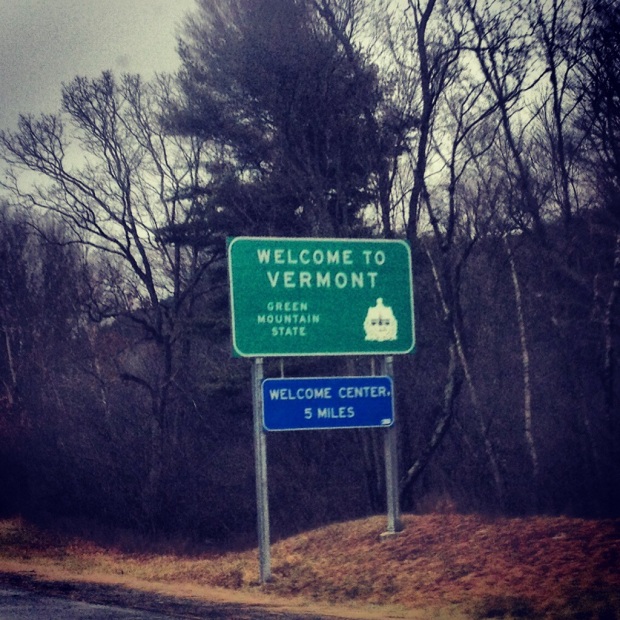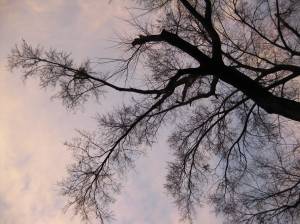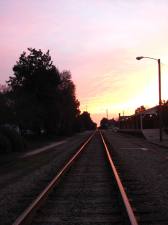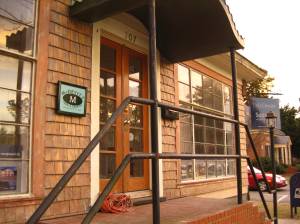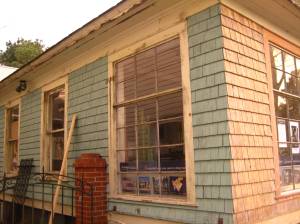Everyone gave such great answers to the questions about home, that it is taking more time to prepare than anticipated. It’s a great subject, and I’ll be sharing soon. Thanks all!
Tag: sense of place
Preservation ABCs: Q is for Quality of Life
Preservation ABCs is a series that will work its way from A to Z, bringing words into conversation that are relevant to historic preservation, whether it’s an idea, feature or vocabulary term. The idea is to help you see preservation everywhere you look and wherever you go. Enjoy! See previous letters.
————————–
Q is for Quality of Life
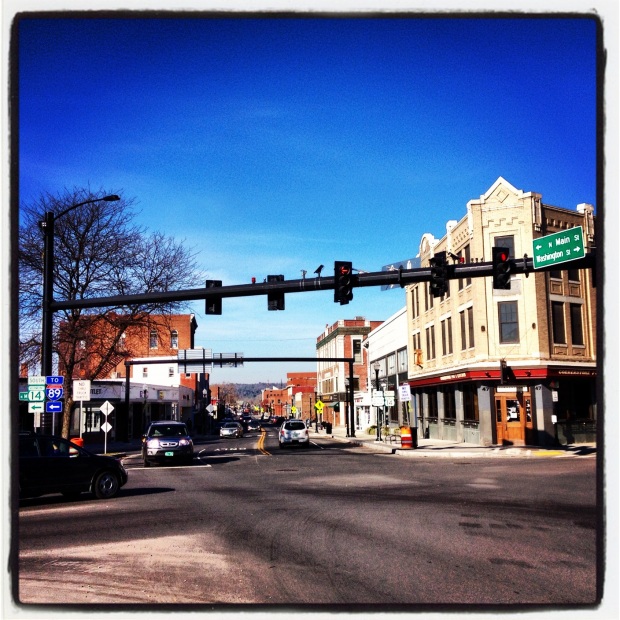
A historic, walkable downtown like this one of Barre, VT might fit your quality of life.
Historic preservation aims to preserve the quality of life which a community values and to help foster and improve quality of life where possible. It is important to understand that quality of life means different things to everyone. Some people prefer bustling cities with reliable public transit and walkable neighborhoods. Others prefer rural country living with a small center of town. Community events might be important. Or local restaurants. Or nearby playgrounds and schools. Some prefer the beach or the mountains or the plains. The bottom line is that everyone defines their quality of life differently.
How does historic preservation connect to quality of life? Simply put, historic preservation seeks to improve the local economy, maintain and rehabilitate the existing building stock, increase awareness of a community’s heritage, engage citizens, preserve the significant past for the future and identify what and why a community is important to itself and to others. By involving people with each other and the built environment around them, their sense of place will improve and people will develop pride in their place. When people are proud of where they live and can identify what is important to them, they are happier, and as a result quality of life improves. It’s a simple chain reaction that historic preservation helps to begin. Historic preservation does not force ideas onto communities or tell people what they should prefer; it hopes the community will speak up and citizens will say “This is important to us! This is who we are and what our community is!” From that point, historic preservation will find methods to improve and protect the quality of life.
So you see, anything can feed into quality of life. And quality of life feeds into historic preservation. My favorite chain reaction is this: people define where they live –> people improve their communities and protect their communities –> people have a sense of place –> people have pride in where they live –> people have a good quality of life –> everyone is happier … therefore … historic preservation is helping to make the world a better place and helping to save the world (as we flamingos might say).
Improving Sense of Place
The previous sense of place posts have discussed how to define and how to measure sense of place, as a concept and as something more tangible. Sense of place is an empirical concept, but one that is understandable and applicable by those who study communities and the combined cultural and built environment.
The point of studying sense of place through casual discussion or scholarly analysis is to improve sense of place, and consequently improving quality of life. What makes one place better than another? And what does better mean? Each community or group of people is going to have different definitions for what sense of place means. I think that is one of the most important ideas to remember; sense of place and quality of life is not a standard one-size-fit-all idea. Some communities may want to focus on one aspect over another, whether economic health, transportation, schools, community centers, cultural events or something else.
Once sense of place is defined and measured for each community, how can it be improved? What makes a better sense of place?
No matter the goal, achieving it will require the combined effort of the municipality, local organizations and community members, including many volunteer hours (as that seems to be how much is accomplished). An important step will be for the community to identify what it needs and what it wants, and to rank its priorities. Projects can occur simultaneously, but knowing which is a higher priority can focus efforts.
That probably sounds vague, but it is the simple process of identifying what you want and outlining how to achieve it.
For example, if a town lacks a center, then zoning and development patterns are possibly the problem. In that case, getting the municipality to understand that the town zoning needs to be amended will be important. If a community lacks organized festivals or cultural events, then a non-profit organization or a group of concerned community members may be up for the challenge. If a community wants local businesses, then it must develop a plan to attract business owners. Pop-up businesses are a great way to kickstart enthusiasm and economic development in a community. Creating a sense of place can develop into a very in-depth topic, pulling in marketing and “branding” of a town.
Of course, these businesses and events need somewhere to occur. This is an excellent opportunity for rehabilitating or restoring historic buildings (or even old buildings) and cleaning up community parks and green space. Improving sense of place can happen one event at a time, one building at a time. Resources such as Project for Public Spaces and the National Complete Streets Coalition offer guidelines for creating healthy communities. Each town or community will interpret the information differently.
The most important element of improving sense of place is people; the community needs concerned, dedicated residents who want to be proud of where they live.
What do you think? How can you improve sense of place? Do you have any concrete solutions?
——–
Next up (next week) for the sense of place series: inferences and assumptions about places you’ve never been. Anything else you’d like to discuss?
Measuring Sense of Place
Last week, the Sense of Place mini-series began by discussing how to define the concept “sense of place.” I wrote that asking questions relating to the five sense can help you to understand and define a place, and commenters added their own thoughts. It’s a topic open for scholarly and casual discussion, one that is gaining popularity and understanding. While preservation includes discussions of sense of place, the topic of sense of place could be its own dissertation. Therefore, I’m letting you know that I’m not an expert; I enjoy pondering the concept, learning about it and talking with you about sense of place. So let’s continue.
Beyond defining sense of place, how do you measure it? How do you classify this somewhat abstract concept? How do you know if a place needs a sense of place improvement?
First, ask yourself if you can define sense of place for your locale. It may seem obvious, but if you cannot identify this particular place, then it probably lacks a sense of place. Typically, I think of many suburban locations as lacking a sense of place. If you have driven along Long Island highways, particularly central Long Island, you probably know what I mean. Basically, the highways looks like Anywhere, USA filled with car dealerships and chain stores and restaurants, all with the same, standard plans. (This isn’t to say Long Island is the only place that looks like this; it is just what I am familiar with.) However, imagine my pleasant surprise when I came across Build a Better Burb, an organization dedicated to improving sense of place on Long Island through Main Street revitalization, regional planning and housing solutions. Finally!
While one community may have a stronger sense of place than another, I’d say that it isn’t something necessarily up for traditional comparison. The idea isn’t to give every place the same feeling and measure it by the exact same standards. Perhaps a good way to measure is by cultural/social feeling (mentioned by Karri). If a community hosts events, has people out and about in all forms of transit (depends on location) with daily interactions, features a variety of businesses and has a welcome vibe, then it must have a strong sense of place. Right?
We preservationists talk about local businesses over and over, but for good reason. An important measure of sense of place could be the ration of locally owned, independent businesses vs. chains of corporate America. Common sense will say that the more local businesses = a stronger sense of place.
Another measurement could be the overall happiness (though measuring happiness is another difficult subject) and level of involvement from community members and frequency of events. A town with residents who care and want to create a home will shine and be a welcoming place and appear as a nice place to live. And since individuals compose a town, when they are involved, they will shape the town and sense of place.
How to measure sense of place is a good question. It’s one to which I do not have an answer. For now, I’ll leave my opinion on this matter as: understanding how to define sense of place, allows you to recognize the strength of a place and to empirically measure sense of place. This paper from the University of Queensland, Australia suggests empirical studies, for example. But, as for the charts and graphs type of measurements, I don’t believe it’s that kind of concept.
And while these may be subjective measurements and opinions, perhaps sense of place is a concept best understood and measured subjectively, in order to maintain the individuality of places. Maybe a measurement is based on how in depth you can define the sense of place for the community. What do you think? What would you like to add to measuring sense of place?
Defining Sense of Place
Preservationists often talk about a community’s “sense of place” in relation to creating, identifying or enhancing that sense of place. To those of us in the preservation field and those of us who interact with communities, sense of place is an expression that we inherently understand and unanimously agree is important. Yet, perhaps it sounds like an abstract concept to others.
A mini-series (beginning today!) on Preservation in Pink will explore sense of place, beyond its casual mentions here and there. How can you define sense of place? How can it be measured? How can it be improved? In this first post, let’s discuss how to define and understand sense of place.
What comes to mind when you hear “sense of place” in conversation? Without any further meaning it sounds like knowing where you are located – which town, city, state, country. But, sense of place isn’t really about directions. Aside from knowing your point on a map, knowing your location can be attributed to identifying landmarks – built and natural.
Alright, you know your location on a map, you can see familiar landmarks; but, what more is there to sense of place?
A good quote about sense of place, found via the Northwest Earth Institute is from Wendell Berry, a well-known bioregionalist, is: “If you don’t know where you are, you don’t know you who are.” If you know your location in all senses, you’ll understand its sense of place.
For simplicity’s sake, take the word “sense” literally and combined your five senses: sight, smell, hear, touch, taste. What do you see in a place (buildings, landscape)? What do you smell (agricultural, industry, nature)? What do you hear (cars, trains, river, ocean, wind)? What can you touch (street surface, building materials)? What do you taste (what are the local foods)?
Think about where you live or a particular place that you love. Can you answer those for your neighborhood, community or town? (A place does not have to be defined by town and city boundaries, remember.) Now consider the combination of those answers to the five senses and answer this: how do they make you feel about a place? What memories can you associate with those feelings (and senses)?
Sense of place is about identity and relationships: the identify of a place and the relationship that people have with it. In other words, how do people connect to a place?And how do they define that place, through what tangible (buildings, landscape) or intangible (smells, sounds, feelings) connections?
So, sense of place is subjective, but not necessarily abstract. Would you agree? What else would you add or like to know?
—–
Do you have good resources to share? Let me know. For more on sense of place and relationships and other disciplines, read this research by Jennifer E. Cross at Colorado State University.
Friday Links
Happy Friday! Here are some preservation related links from around the web:
An excellent article about the value of sense of place (and historic preservation) from the Urban Land Institute.
Take advice from Sabra and change the [preservation] world with kindness. Write a letter to someone, a business, or an organization that has acted in favor of preservation.
How to preserve Auschwitz? (Thanks for the link, Adam.)
A barn collapses in Saratoga County, New York. (Thanks for the link, Luke.)
Wondering about the biggest snowstorms in history?
Need a summer field school? How about San Gemini, Italy Program – a 12 week summer course. (Thanks for the heads up, Andrew.)
Living and Working, One Place or Two?
As many of you, I have today off from work for President’s Day (though technically it is officially designated as Washington’s Birthday. See here for an interesting fact check about this holiday). In recent months I have spent my days off getting ahead on grad school applications, GRE studying, other random writing projects, going for a run, and of course, drinking lots of coffee from my favorite local shop. I consider my time spent running and drinking coffee as time spent enjoying my town. (And as you can read in Friday’s post, I do try to make an effort to always enjoy where I am).
For whatever reason, the town is currently undergoing sidewalk repairs. To me, this seems rather silly in the chilly February weather, but I suppose they have their reasons. While walking home from the coffee shop this morning, I realized that I tend to always walk the same way, unless something changes my routine. Today it was the sidewalk repairs. I also walked a slightly different way to the coffee shop this morning, but I’ve walked that route at other times. However, on my way home, in order to avoid the concrete dust and the drilling noises, I cut down a different street and through the library parking lot, essentially one block down that I normally walk. And, as silly as this sounds, I remembered that it’s sometimes fun to take a new route.
Maybe it’s just me, or does everyone tend to stick to the same routes? In college, I never did. I always liked to walk home from classes or work or practice a new way and wander through the less traveled paths on campus. And on road trips or bike rides, I love traveling down unknown roads. So why would that change now, here? I’d guess that it is because while I live here, I do not work here, meaning most of my time is not spent here, walking around. When I am in town I walk the routes I know I like and past the stores because there is always something interesting to see. Call me a creature of habit.
This self analysis reminds me that I am one of those people who would love to work in the town where she lives. Of course, factors such as walkability and a short commute come into play as well, but mostly working and living in the same would give me the greatest connection to where I am, and maybe that would solve this geographic commitment phobia (maybe). Not everyone wants to live and work in the same place – many people want to get away and keep those parts of their lives completely separate. Not me. Being a preservationist ties together every part of my life and makes me want to keep that strong connection. It all reflects back to people having pride where the live – sense of place, quality of life. You can’t escape this discussion.
I’ll come up with a plan for the next adventure in life. What about you? Does it matter to you?
Small Town Moments
This may or may not have been stated, implied, or recognized in previous posts, but I have geographic commitment phobia. Relationships, habits, hobbies, promises – I’m reliable and will commit 100 percent. But, tell me to choose one place to call home (aside from my childhood home) and I will run in the other direction. Maybe it due to my age, stage in life, or the fact that I’ve read too many books about pioneers on the Oregon Trail.
Whatever the reason, this conflicts with my notion of loving the place where I am, and feeling that sense of place and pride in one’s community. I’m not really being true to my word if I keep dreaming of other places, am I? I have issues with the warm southern weather and the lack of snow and the distance from home. But, I love small towns (mostly), the railroad tracks sitting one block away, the constantly sunny days, my house, my running routes, and the people I have met. And these factors are all important in making me content to live where I do. There are certain small town moments that I love, classic Americana, if you will.
Last year, Vinny and I brought laundry to the laundromat in order to catch up on the neglected baskets full of dirty clothes and towels. We loaded the laundry into the machines and then sat outside on the hood of my car, eating a pizza, while the freight train passed by, not even 100 yards away. Moments like that will always remind me of this small town in America.
The other day after work we took a walk around town in the 70 degree, windy weather (in February). We saw a few people along the way and meandered past the shops and boutiques that had since closed for the day. And since I’m still participating in Project 365, I always have my camera and am delighted to find good opportunities, such as this building in town. Sotheby’s Realty had previously been a robin’s egg sort of blue, so the change to natural wood is not something you can miss.
Upon closer inspection, we could tell that they were in the middle this task, which became obvious once we turned the corner. I believe it was even a darker shade of blue than in this picture, but you get the idea. While blue may not be historically accurate, Southern Pines has yellow, dark green, and pink buildings along the streets, so the blue fit in nicely.
So, whether it takes you a walk around town on a beautiful day, a good cup of coffee, gazing at houses, finding a good restaurant, or anything else, I hope you find some way to enjoy the place you live. It always takes me a while and it may not be constant, but I think if we are all happy to be where we are for now, life is much easier. And the preservation field will thank us for finding value everywhere we live. Think of the National Trust’s initiative, This Place Matters. And send along stories of why you like where you live.
Abstract Communities
As a preservationist I advocate that people know their surroundings, wherever it may be that they spend their time living, working, and having fun. After all, isn’t life just better if you enjoy those places? Whether you know your neighbors or the people where you shop, finding that sense of place and community gives you a feeling of belonging, of being a part of that community. Consequently, that’s a positive step for quality of life and pride in your general environment.
Yet, being a part of a community can be hard for us transient types. And it’s hard for those of us with nonstop schedules. How do you belong in one place when you’re always in ten different places at once!?
Fortunately, community is a broad term. You are probably part of a community now, whether you realize it or not. Who do you see on a day to day basis? Where do you work? Where do you shop? Do you volunteer or coach a sports team or hang out with other parents at your kids’ soccer games? All of those may be different communities, altogether composing a larger community. Still, these are examples of typical communities.
Working in oral history has created a community for me, but one that is unbound by geography. Since there are only two of us working on the oral history project, my interaction within the confines of Fort Bragg has been very limited. There are few places I’ve traveled to on post, yet I know my way around Harnett County where most of the interviewees live. I know these people, their homes, who is friends with whom, and the back roads to their houses and where they attend church. They are the people I call and communicate with; very seldom do I have business reasons to interact with people in the same (large) compound at work. It’s a perplexing thought to have worked somewhere for over two years and to not know many people outside our own office and nearby offices.
However, I cannot imagine a reverse situation in which I am familiar more with Fort Bragg than with Harnett County’s back roads and the people who lived at Overhills. I may be based on Fort Bragg, but my work reaches far past the gates. They are my community. So, while a part of me feels as though I do work in my Overhills bubble in my office, I am grateful to have my work focused elsewhere and concerning people who live all over the country. My community gives me pride in my work and has introduced me to new surroundings, peoples, and lifestyles. I may not live here in North Carolina for much longer, but a part of me will always belong to this present community.
There are many more abstract communities, if you will, such as the internet. What is your community? Do you have more than one? Is it typical or abstract?
Northern & Southern. Nature & Nurture.
Lately, I notice myself strolling, lingering, and talking to people in line at the grocery store or even people I pass while running. Small talk is easy to do. But, really, when did this happen? I find myself wondering if I have always been this nice. What happened to the me who walked extremely fast and never made eye contact with people on the sidewalk or while running?
Let, me clarify a few things. I grew up in New York. I grew up with sarcasm, Billy Joel, tough sisters, my father’s words like jerk & knucklehead, phrases like ‘breaking your shoes,’ ‘busting your chops,’ ‘ knuckle sandwiches,’ and playing kickball in the street, barbecues, and sitting on the front stoop. My father was raised in Queens and took the subway to school and my mother remembers Long Island as the country.
I was raised a New Yorker, only I didn’t know it until I left. For so long, I wanted to escape and live in the middle of nowhere. I was the only one I knew in my high school who loved country music. When I arrived at Mary Washington in the fall of 2003, I was ecstatic to find myself living in a hall with only girls from Virginia. I played the how-do-you-say-this-word game with my roommate and we constantly teased each other for pronunciations.
Throughout college, I remained fascinated by open space, towns that didn’t overflow to the neighboring town, and the world outside of Long Island. I traveled to Kentucky and Oregon with my preservation club friends and suddenly had justification for my adoration of the United States. Still, west of the Mississippi called me – I had to live in the Great Plains. After college, I had my wish. Finally I had a reason to wear cowboy hats and boots! I lived in Omaha, Nebraska for the summer.
Oddly enough, I found that my gypsy soul easily became homesick. (Not to mention, no one in Omaha actually wore cowboy boots and hats.) I wanted to be closer to the east coast with my family. Next, I returned east, this time in North Carolina, living in a small town, which happened to be another long time goal of mine. My job threw me into a variety of southern culture, from upper class to lower class. Some of the accents were rather hard to understand at first and posed troubles in transcription.
Two years later and I know what a cookout is, what a pig pickin’ is, what a dune buggy is, more about tobacco farming and fox hunting than I ever thought I’d know, and the accents no longer pose a problem. And, despite my resistance, I am slowly acquiring certain words that sound southern. When I go home, my family and friends tease me for the slightly different ‘o’ sounds I now use. I never had a very strong New York accent. I never picked up a Virginian accent from college. But, two years of transcribing southern voices and it’s slowly seeping into my own voice.
My newfound mixed accent is not something I had wanted. You see, I’m not southern. I don’t plan on becoming southern. I love country music and the easy-going southern life, but it’s not for me. This is mostly due to my abhorrence of hot weather, my remaining sarcasm, and my need to stay connected to my roots. Don’t get me wrong – I have nothing against the south and for the record, I would never live on Long Island again either. I am just meant for the north.
With that said, how did I succumb to the extreme politeness and the accent? Just call it an occupational hazard. In oral history, it’s hard not to live in the world that you are researching. But, this begs the question: which has been more powerful for me, nature or nurture? I don’t know. I lived in New York until I was 18 and then for two summers after that. But I grew up as an adult in Virginia, Nebraska, and North Carolina. Would I be different I worked in the north after college? Maybe. It’s an interesting thought to ponder: how much do regional differences shape who we become? Every place you live must offer some form of nurturing and environmental/regional influences. Where we live must speak to and about who we are, whether as children or adults.
I’m northward bound in one year, but I must clarify that as much as the southern climate and I do not get along, I am grateful for who the south has helped me to become as an adult. I’m also grateful for country music, which is my absolute favorite aspect of southern culture: that modern country music and the good old timey bluegrass music. I love every region in this country, but I just can’t live everywhere – hopefully that makes sense.
[And for the record, I’ve never said “yous guys” (even as a New Yorker) and I’ve never said “y’all” (even as a Carolinian.]
Where have you lived and how has it shaped you?
